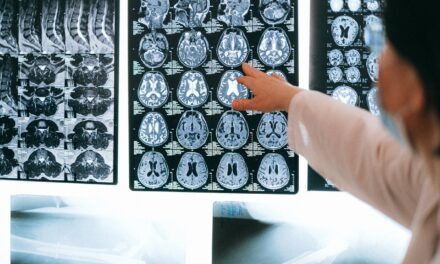Embark on a journey through the historical evolution of Rocklin, California.
Rocklin’s past is a compelling chronicle of change in Placer County, from its early indigenous inhabitants to its present-day status as a thriving city.
Indigenous Roots and Early Settlers
Native American Heritage: The Nisenan’s Connection with the Land
The Rocklin region’s earliest known inhabitants were the Nisenan Native American tribe, a group deeply intertwined with the natural world around them.
A profound respect marked their existence for the land and its resources, which they managed with sustainable practices long before the arrival of European settlers.
The Nisenan’s way of life, rich in tradition and spiritual beliefs, laid the foundational narrative of the area, highlighting a harmonious relationship with nature and a deep understanding of the local ecology.
The Settler Era: A New Chapter Begins
In the mid-1800s, the discovery of gold in California acted as a magnet, drawing settlers from far and wide to the region that would become Rocklin.
This influx significantly shifted the area’s demographic and cultural landscape. These early settlers, attracted by the promise of prosperity and fertile land, brought new technologies, customs, and an entirely different perspective on land use and ownership.
This era signaled the beginning of significant changes in the region, setting the stage for the development of modern Rocklin.
Impact on Indigenous Communities
The arrival of these settlers also had profound implications for the indigenous Nisenan tribe.
This period marked the beginning of a challenging era for the Nisenan as they faced the pressures of displacement and cultural upheaval. The settlers’ expansion drastically altered the landscape and natural resources that the Nisenan had depended on for centuries.
This era represents a complex and often painful chapter in Rocklin’s history, highlighting the need to recognize and preserve indigenous heritage in the area.
Foundations of a Growing Community
As settlers established themselves, Rocklin evolved from a collection of mining camps into a more structured community.
Agriculture, alongside mining, became a staple of the local economy. Orchards and farms dotted the landscape, and the community’s first buildings and roads were constructed. This period laid the groundwork for Rocklin’s transformation into a town, setting the foundation for future growth and development.
The legacy of these early settlers, intertwined with the indigenous history, is an integral part of Rocklin’s rich historical tapestry.
The Gold Rush and Its Aftermath
The Mining Boom: The California Gold Rush era saw Rocklin transform into a bustling mining town, attracting prospectors and entrepreneurs alike.
Transition to a Quarry Town: Post-Gold Rush, Rocklin capitalized on its rich granite deposits, establishing itself as a prominent quarry town. The granite industry shaped its economic and cultural identity for decades.
Twentieth Century: Diversification and Development
From Quarrying to Railroads: As quarrying waned, Rocklin’s proximity to the Transcontinental Railroad facilitated its growth into a regional transportation hub.
Suburban Expansion: The late 20th century saw Rocklin evolve from a rural landscape into a suburban city, with the development of housing, schools, and commercial areas.
Preserving History and Embracing Modernity
Heritage Conservation: A Testament to Rocklin’s Past
Rocklin’s dedication to preserving its rich heritage is a cornerstone of its community identity.
The city prides itself on maintaining landmarks that echo its storied past. The Rocklin History Museum, a treasure trove of local lore, stands as a beacon of historical knowledge, offering insights into the city’s transformation from a mining hub to the vibrant community it is today.
Similarly, the Old St. Mary’s Chapel, meticulously restored, serves as a charming reminder of Rocklin’s architectural and religious history, hosting various community events that bridge past and present.
Modern Development: Harmonizing History with Progress
Rocklin has skillfully blended its historical roots with modern developments in recent years.
This harmonization is evident in its urban planning, which incorporates green spaces and contemporary infrastructures while maintaining the city’s unique character. Today, Rocklin boasts a variety of modern amenities, including expansive shopping centers, state-of-the-art educational institutions, and recreational facilities that cater to a diverse and growing population.
This blend of the old and the new has been pivotal in making Rocklin a desirable location for families and businesses, providing a high quality of life while respecting its historical foundations.
Cultural Preservation in Urban Expansion
Rocklin’s approach to development is marked by a conscious effort to integrate its historical elements into the fabric of its expanding urban landscape.
Initiatives to protect and refurbish historical buildings while promoting cultural events that celebrate the city’s heritage are central to this strategy.
Efforts like these preserve the city’s historical narrative and foster a sense of continuity and community pride among old and new residents.
Balancing Growth with Sustainability
Rocklin faces the challenge of balancing growth with sustainability as it looks towards the future.
The city’s planners and policymakers are responsible for ensuring that development does not come at the expense of its historical charm.
Embracing sustainable practices, promoting eco-friendly urban designs, and encouraging community participation in preservation efforts are all part of Rocklin’s commitment to maintaining its unique identity amid modernization and growth.
Economic Growth and Community Development
Business and Innovation: The city’s economy has diversified, now including sectors like technology, retail, and education, reflective of its adaptive nature.
Community Engagement: Rocklin strongly emphasizes community involvement and hosts numerous events and programs to foster a sense of belonging.
Q&A: Exploring Rocklin’s Historical and Cultural Depth
Q: What was the significance of the granite industry in Rocklin’s development?
A: Rocklin’s granite quarries were not only an economic mainstay but also supplied stone for notable buildings, influencing local and state architecture.
Q: How has Rocklin preserved its historical sites amidst modern development?
A: Rocklin has successfully blended its historical sites with contemporary urban planning through proactive conservation efforts and community-driven initiatives.
Q: What role did the railroad play in Rocklin’s history?
A: The railroad was instrumental in Rocklin’s growth, facilitating commerce and connectivity, and shaping its role as a regional transport hub.
Q: How does Rocklin foster community spirit and engagement?
A: Rocklin nurtures community spirit through events, recreational programs, and public spaces encouraging resident interaction and civic pride.
Q: In what ways has Rocklin’s economy diversified in recent years?
A: Beyond its historical industries, Rocklin now thrives in technology, education, and retail, showcasing its economic resilience and adaptability.
Q: What future developments are planned for Rocklin?
A: Rocklin’s plans include further economic diversification, sustainable urban development, and enhancing public amenities to enrich residents’ lives.
Rocklin’s Continued Evolution
Rocklin’s history tells a tale of transformation, resilience, and community.
Rocklin has continually adapted from its days as a mining and quarry town to its current status as a vibrant suburban city, always looking towards the future while honoring its past. It is a city where history and modernity coexist, creating a dynamic and enriching environment. As Rocklin moves forward, it carries the legacy of its diverse history, ready to embrace new chapters in its ever-evolving story.
What recent milestones will Rocklin achieve, and how will its rich history continue to shape its future?





